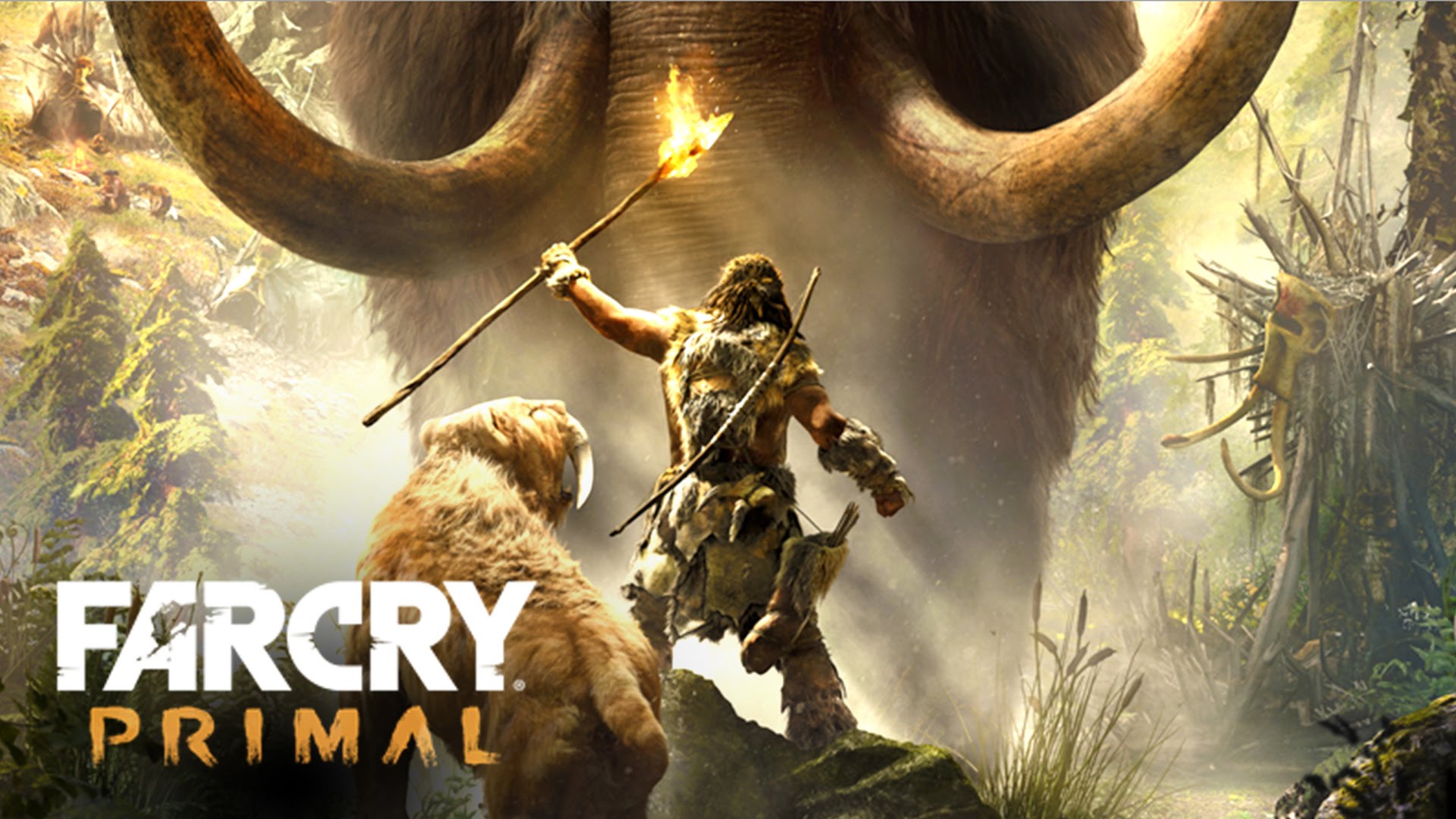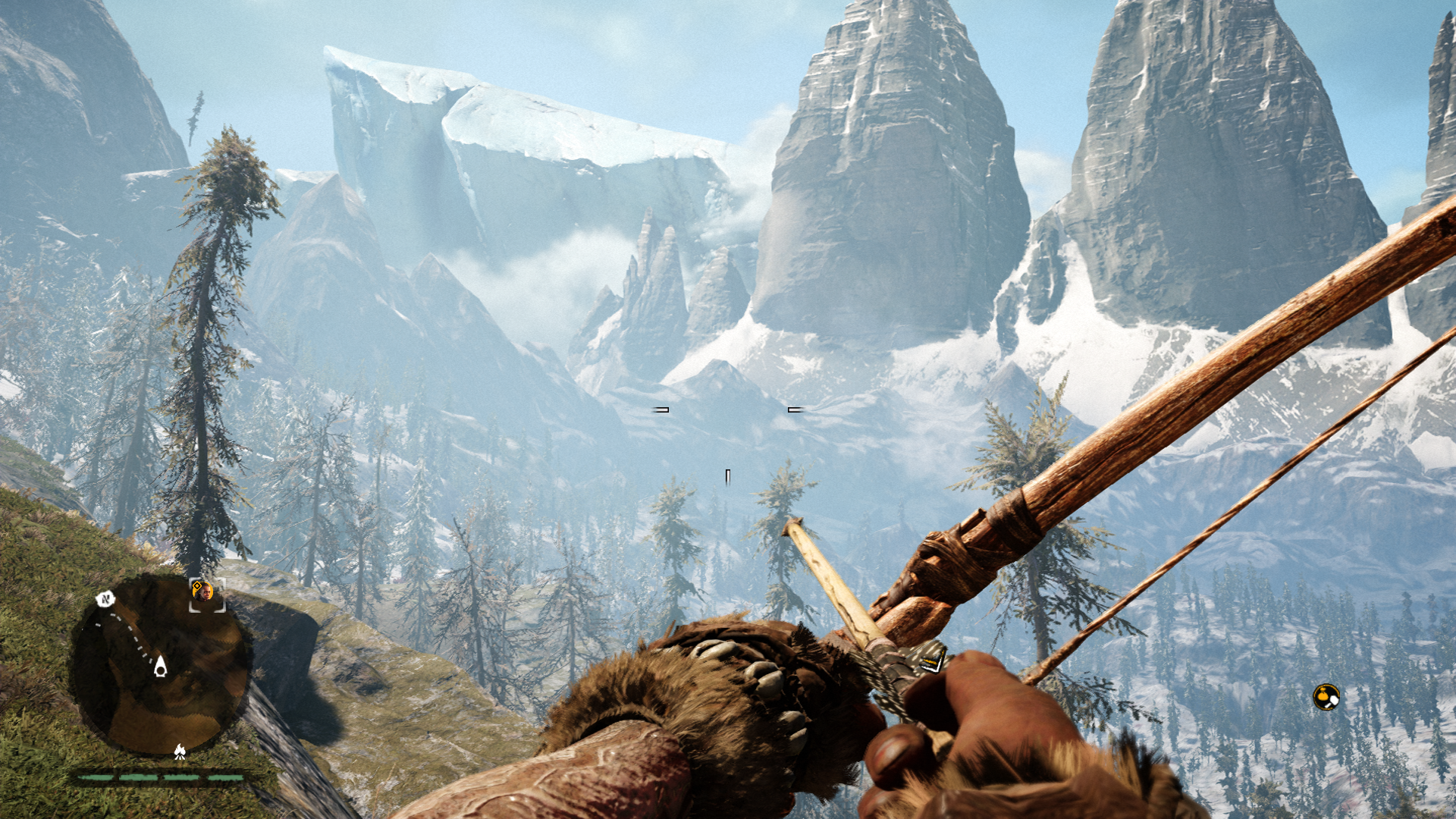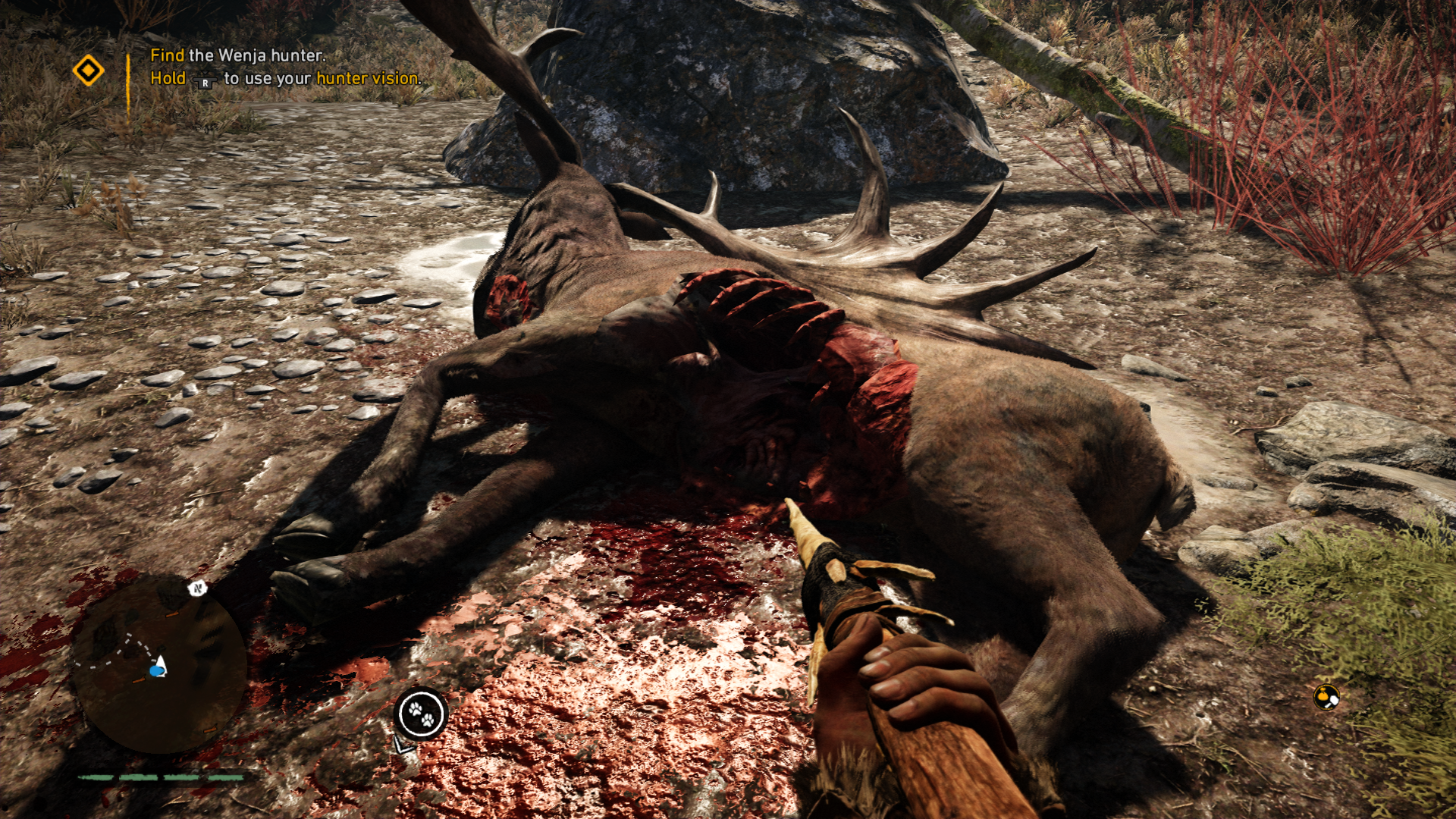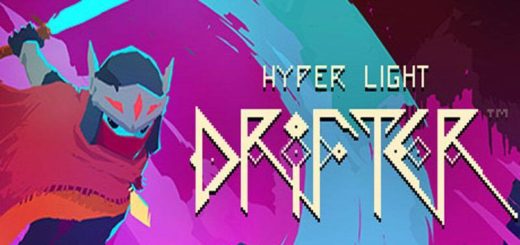FAR CRY PRIMAL Review

When Ubisoft announced FAR CRY PRIMAL, most assumed it to be similar to FAR CRY BLOOD DRAGON, a cheap spin-off of the main series with fun and daring new locales and gameplay hooks. However, FAR CRY PRIMAL is priced at $60 and is being pegged as the full-fledged Far Cry experience. So is PRIMAL a “real” Far Cry title or not? The better question is how well the Far Cry formula really translates to a caveman setting, and, really, if it should’ve been made at all.
When PRIMAL opens, it’s clear that painstaking effort has been taken in transferring the modern open world FPS series into a primitive battle for survival. The world is incredibly detailed and beautiful, with its bright colors almost blinding you during times of peak daylight. As you make your way through the land of Oros, its populace speaks with a native tongue nowhere near anything existing today. That’s right, there is not a single word spoken word of English, let alone any other modern language. Much like GAME OF THRONES and AVATAR, the developers crafted their own language for the game, which means players will be playing the game with visual cues and lines of subtitles in place of dry voiceover work. The language has different dialects for each tribe in the game, and actors are much more expressive in order to bridge the language barrier. As a result, this Far Cry has much more engaging characters than previously featured in the series.

The lovely view is one of the few things in the game that won’t try to kill you
It’s impossible to spoil anything about PRIMAL’s story, because there is no story to spoil. PRIMAL focuses on the player character, Takkar, reuniting the scattered Wenja tribe in the new land of Oros. You find your friends and bring them to your village, and that’s it. Players might take issue with this fact, because, frankly, with no narrative, what’s the emotional connection? The main quest is now simply an extension of the fetch quests that have come to define Far Cry. Other Far Cry games had most players finding themselves in love with poster child antagonists like Vass and Pagan Min. But here there is no real antagonist, because there is no real story. There are other rival tribes, the Udam and Izila, but they are really just like you, trying to survive in a world plagued by uncontrollable beasts like the mammoth or sabre-toothed tiger (more on these guys later). As I played, I couldn’t help thinking that maybe these other tribes saw us as their enemy just as we saw them. Sure the Udam are cannibals, but only because they were forced to do so in order to survive the bitter cold of the Ice Age. This is a tiny nuance, but really differentiates PRIMAL from the others in the series which had clear, black-and-white, morally defined characters. Where older Far Cry games were highly character driven, PRIMAL is world driven.

Not quite the BAMBI crossover fans were expecting
As I mentioned, PRIMAL is about survival, so the player will deal with plenty of combat. You can put down your AK-47 and RPG; this is 10,000 BCE after all, so players are equipped with rudimentary versions of clubs, spears, and a bow and arrow. This eliminates the typically massive FAR CRY loadouts and unlockables, and instead offers a slow upgrade system based on finding pelts, wood, and rare stones across the map. Far Cry games have always implemented a resource system, but PRIMAL places even further emphasis on it, which, considering the setting, makes absolute sense.
With this setup, players can attack from range with a bow or a sling, but typically a bulk of engagements with feral animals and other tribes will be done with clubs and spears. PRIMAL’s melee combat isn’t the most satisfying. This is still based off of a shooter skeleton, which is very telling with the lack of a blocking or parrying system. There were numerous occasions where I felt like I was just hammering the trigger, trying to bash people with little to no strategy or skill. Thankfully, the series retains its stealth gameplay from previous iterations with quick takedowns and various perks to keep combat fresh and engaging.
But PRIMAL’s hook and newest evolution to the series is the ability to tame wild beasts. Takkar, for some reason or another, is a Beast Master with the ability to commune with the spirits of animals and tame them into faithful companions. Oftentimes, I enjoyed sitting in a bush and having my jaguar charge forward to claw out my enemies for me. Controlling the beasts is simple, with only a point and click for movement or attack, but it’s effective and shakes up engagements in an innovative way. The only pitfall with the system is that my beast would roam around, while I was trying to remain hidden, and ruin my plans (tip: don’t bring your pet to stealth missions!).

Jaguar: Man’s Best Friend
All of this leads to one lingering question: Is PRIMAL robust enough to be considered its own game and not simply a retextured version of FAR CRY 4? Many of FAR CRY’s staples return in completely reimagined versions, such as binoculars replaced by a scout owl to pinpoint enemies. Still, others are lazy and tacked on, like how bonfire hills replace radio towers as the generic “capture this location” objective scattered across the world. It’s this fear of deviating from the license that holds PRIMAL back from its true potential. For a game set before the invention of the wheel, it plays out exactly like it does when you’re facing modern mercenaries with cutting-edge equipment. You still liberate outposts, you still use a grappling hook (this time made of wood and stone), and you still embark on repetitive side quests. But if PRIMAL does one thing correctly, it proves that the FAR CRY formula is effective, because even in the setting of 10,000 BCE, it is still fun to plan out engagements with all of its open world tools and abilities.
FAR CRY PRIMAL is not a game-changer for the open world genre, but it does offer some unique experiences (like stabbing a sabre-tooth with a janky spear!). The open world is massive and there is an incredible amount of tasks to do and caves to explore. The land of Oros is beautiful. But I can’t help but feel like the crutch of FAR CRY’s gameplay loops hold the game back from really exploring the potential of the setting. The evolutions it does offer are exciting and unique, though I wish the entire game had been more willing to embrace new ideas in its exploration of the past. Regardless, FAR CRY PRIMAL is a blast to play and really does offer a wealth of content for a full price experience. If you were looking for a stone age adventure unlike anything you’ve played before, PRIMAL will disappoint. But if you’re a Far Cry fan looking for the ideal synthesis of core series concepts, this is the game for you. As for myself, I’m eager to see what new twist will be introduced in the next entry of the series.
Verdict: Recommend
Played on Xbox One, also available on PC and PS4.



